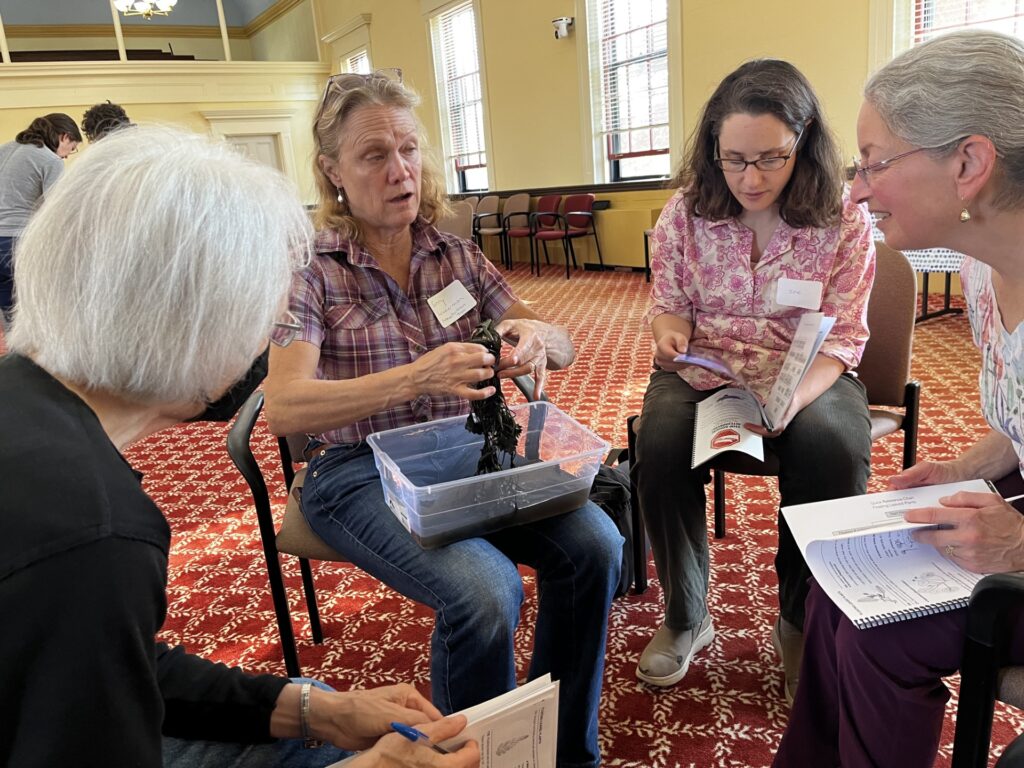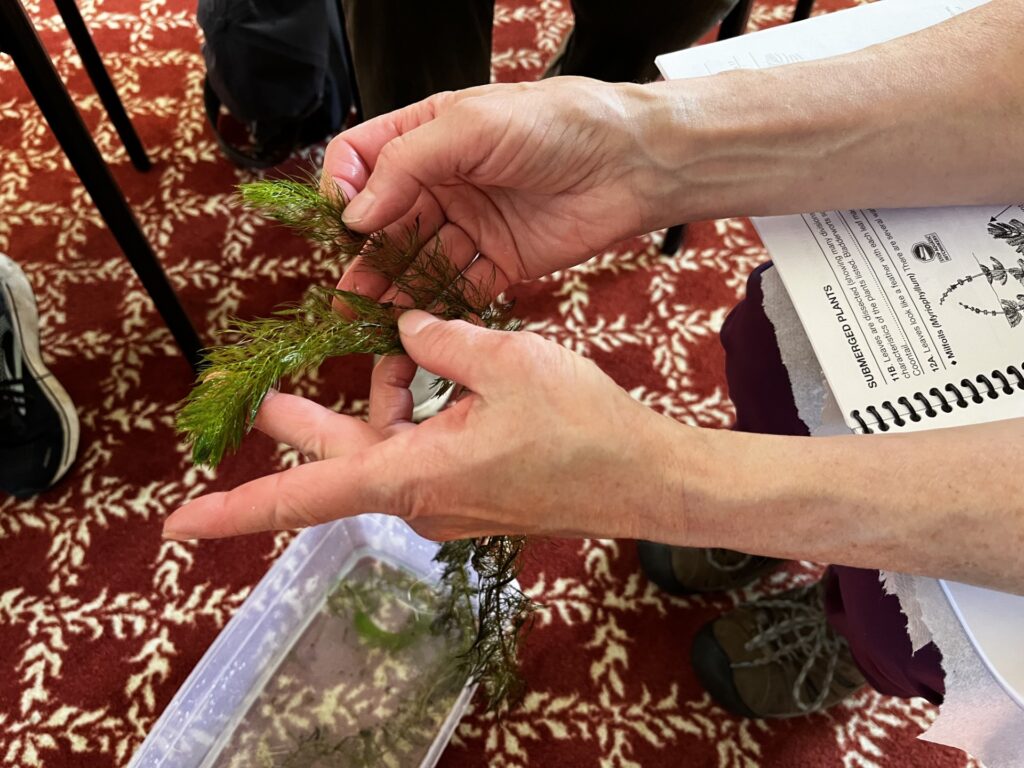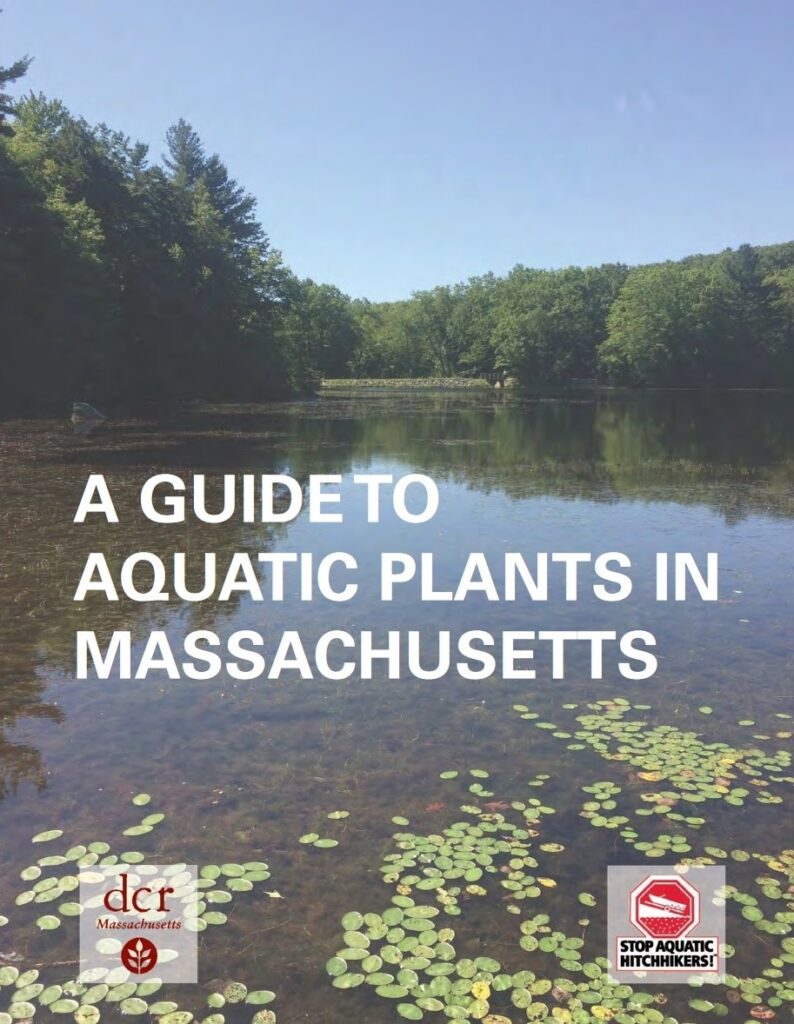On October 22, Town Hall was transformed into a plant identification biology lab, as thirty-five lovers of local ponds and rivers gathered to learn to identify invasive aquatic species. The Workshop on Invasive Aquatic Species attracted environmentalists and municipal staff from seventeen towns throughout the SuAsCo (Sudbury/Assabet/Concord) watershed. The intent was to equip towns with sufficient expertise to organize and staff their own invasive plant removal opportunities.
The two-hour workshop was led by Kara Sliwoski of the Massachusetts Department of Conservation and Recreation (DCR). Sliwoski opened the discussion with a review of how invasive plants and algae can crowd out native species and starve the waters of dissolved oxygen as the voluminous biomass decays. She then introduced the characteristic features that can be used to distinguish the species from each other: Was the plant submerged or floating? Do the leaves appear in whorls along the plant stem? Are the leaves broad or lance-shaped? And so on.
The workshop leaders had gathered samples of both invasive and native plants from local waterways and arrayed them in water-filled bins across two long tables. Each workshop participant received a printed copy of A Guide to Aquatic Plants in Massachusetts, which you can also find online. Participants split up into small groups to work on identification and scrutinizing the tiny features of the samples and the drawings and descriptions in the plant guide.

Workshop participant Jody Harris commented, “In the past few years, I’ve learned to identify and remove many invasive plants on land, as I’m in the woods a lot. I also spend a great deal of time on lakes and rivers in a kayak, and want to be able to support and protect our water resources. Before the workshop, I had no idea how many invasive species are in our fresh water ponds, lakes and rivers.”

The October 22 workshop was hosted by OARS (the watershed organization for the Assabet, Sudbury and Concord Rivers), the SuAsCo CISMA (Cooperative Invasive Species Management Area) and by the Town of Acton’s Conservation Department. Volunteers, trained and supported by town staff and watershed organizations, play an important role in removing invasive species, as when a flotilla of Acton residents pulled water chestnuts from Ice House Pond this summer. Aquatic invasive water chestnut removal campaigns have wrapped up for this year but will resume in the spring; contact Heather Conkerton, OARS Ecological Restoration Coordinator, to be informed of future opportunities.

Kim Kastens is a volunteer writer, editor and Board member for the Acton Exchange. She also chairs the Water Committee of Green Acton.
